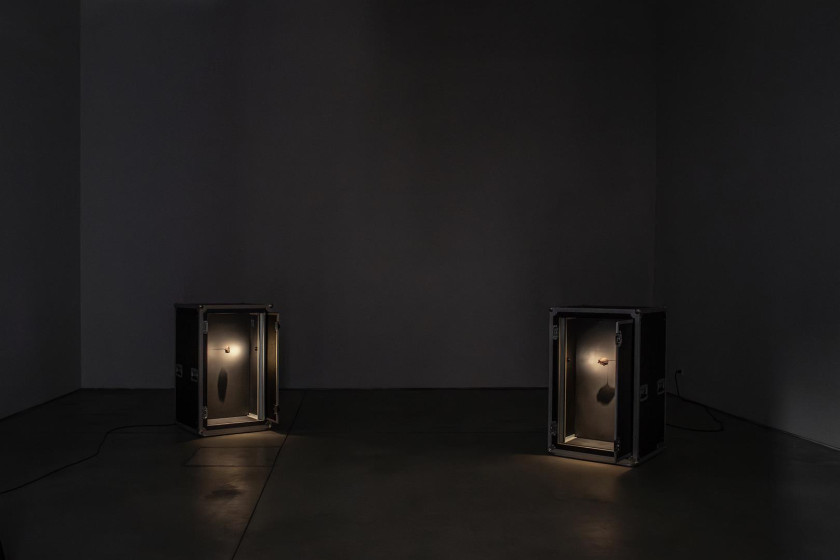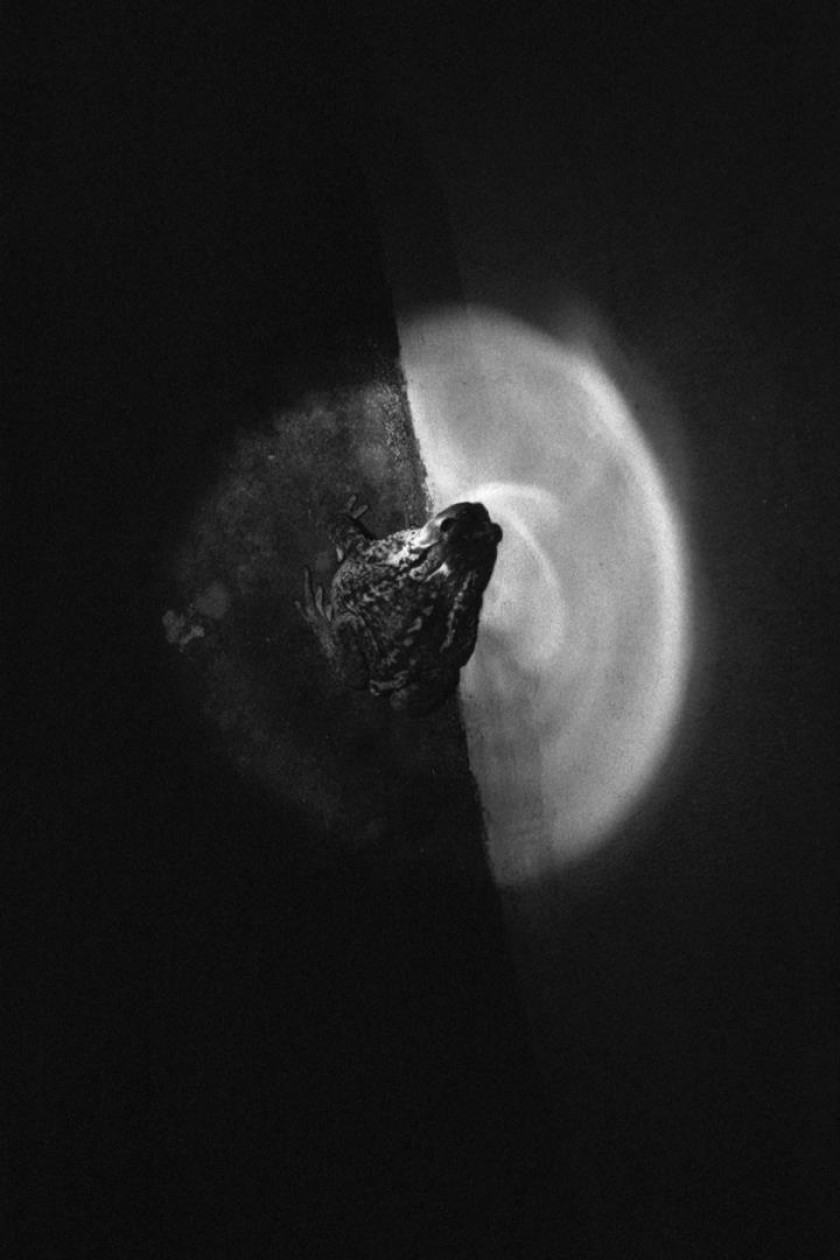Heavy Metal


2024
Iron meteorite Gebel Kamil (provenance: Al Wadi al Jadid, Egypt, 2009 (276,07gr) - IMCA#2093 – GMA #0052, iron meteorite Gebel Kamil (provenance: Al Wadi al Jadid, Egypt, 2009 (341,27gr) – IMCA #2093 – GMA #0052, (2x) Flyht Pro Rack 20U Slide Shock (modified), (2x) magnet plates, stage monitor 800W, sound (“Summertime” by George Gershwin played on Theremin with iron meteorites (one for each hand), continuous loop)
Dimensões variáveis
Improbability, entropy, and anachronism are some of the characteristics that most consistently permeate the visual art of Henrique Pavão (Lisbon, 1991), of which the series HEAVY METAL and It’s not going to stop are a complex demonstration. Invoking a series of divine and historical symbols, the artist reflects on the condition of failure, impermanence, the mystique of sound, and celestial objects.
Taking the sacredness of the two meteorites that enclose the installation as his raw material, Pavão exercises a kind of symbolic return by collecting them and placing them inside two air transport boxes for concert synthesisers, now adapted as museum display cases. Alongside this spatial reorganisation (whose metaphorical determination, incidentally, multiplies and unfolds over a number of axes), the artist restores to these celestial metals the possibility of life and communication through the magnetic reverberation of his own body (the last remnant of his identity and origin) when in contact with a theremin. Used in the hands of an instrumentalist, the objects play a vaguely distorted and melancholic echo of Gershwin's Summertime in a loop, projected through a stage speaker whose actual purpose is to return to the musicians the sound they emanate in concert (as if whispering to themselves). Mythically recognised as the lullaby from Porgy and Bess (1935), the musical arrangement is simultaneously one of the first compositions to be selected to send into space (in the context of Teen Age Message) and, in turn, one of the most reproduced worldwide—reiterating the formal circularity of the device and the purpose of cosmic destruction/return present in the work as a whole.
Spectators of their own destruction, the meteorites are haunted by the image of a frog contemplating this funeral eulogy in perpetual motion. Referencing the sequence which features raining frogs in Paul Thomas Anderson's film Magnolia (1999), as well as the old biblical parable from the Old Testament, Exodus 8:2, the photographic print It’s not going to stop seems to recall the Egyptian meaning of the symbolism of the frog as an image that accompanies a body on its post-mortem journey—here suggesting a vital continuity, or perhaps even a promise of resurrection.
Eva Mendes
